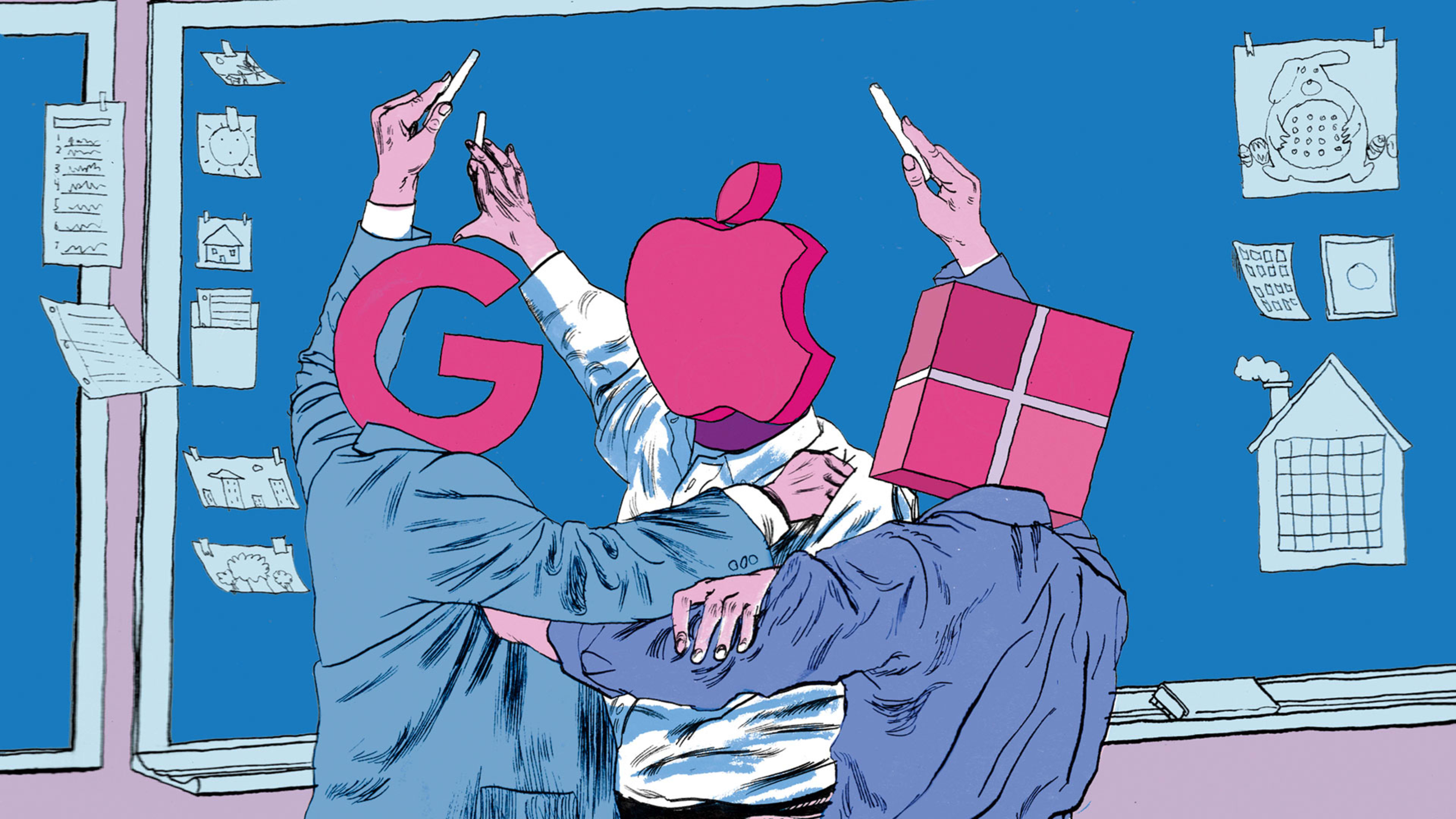A Mozart duet echoes through the dim auditorium of Philadelphia’s String Theory high school, performed by a pair of plaid-skirted violinists reading music off their school-issued iPads. In other classes at the performing-arts-themed public charter school, students use their iPads to plot DNA data, design graphics, and make movies. At first glance, the school is a model Apple education customer, buying into both its hardware and iOS ecosystem.
A more complicated reality lies beneath the tablet glass. Teachers at String Theory distribute curriculum via Apple’s iTunes U—but students use Google Docs and Google Drive to complete and submit assignments. “They get the full App Store experience, and they can also use all the functionality of Google,” says Christine DiPaulo, the school’s director of innovation. “It’s the best of both worlds.”
Apple may not share that perspective. Since the Apple IIe desktop computer found a home in California schools in the ’80s, ushering in the era of the classroom PC, Apple and Microsoft have vied for the attention of American students. With the introduction of the iPad in 2010, Apple had a tool poised to displace the PC as an education essential, and the app-based software to go along with it. Within a few years, the company was selling millions of the touch-screen devices to schools, eclipsing Microsoft, which was marketing its own devices and free Office software to students. In 2013, Apple devices accounted for 50% of shipments to U.S. classrooms, according to research firm Futuresource Consulting. Microsoft, despite its lead globally, came in second at 29%.
It’s an entirely different picture today: Google now dominates K–12 education in the United States, even in schools, like String Theory, that have formal relationships with Apple and Microsoft. Just five years after Google introduced its bare-bones Chromebook laptop—which runs a software suite that includes Gmail, Google Drive, Hangouts, and more, and retails for as low as $150—the search giant has topped both Apple and Microsoft in U.S. education sales. It shipped more than 5 million devices to U.S. buyers in 2015, roughly twice the total of each of its rivals. In the first quarter of 2016, the Chrome operating system’s share of shipments to U.S. classrooms hit 51%—a number that will continue to rise, according to Futuresource.
Recognize your brand’s excellence by applying to this year’s Brands That Matter Awards before the early-rate deadline, May 3.
